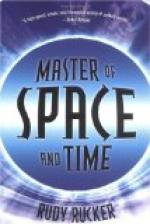Honors were showered upon the leaders in the enterprise. Charles Bright, the chief engineer, was knighted, though he was then but twenty-six years of age. Banquet after banquet was held in England at which Bright and Thomson were the guests of honor. New York celebrated in similar fashion. A grand salute of one hundred guns was fired, the streets were decorated, and the city was illuminated at night. The festivities rose to the highest pitch in September with Field receiving the plaudits of all New York. Special services were held in Trinity Church, and a great celebration was held in Crystal Palace. The mayor presented to Field a golden casket, and the ceremony was followed by a torchlight parade. That very day the last message went over the wire.
The shock to the public was tremendous. Many insisted that the cable had never been operated and that the entire affair was a hoax. This was quickly disproved. Aside from the messages between Queen and President many news messages had gone over the cable and it had proved of great value to the British Government. The Indian mutiny had been in progress and regiments in Canada had received orders by mail to sail for India. News reached England that the mutiny was at an end, and the cable enabled the Government to countermand the orders, thus saving a quarter of a million dollars that would have been expended in transporting the troops.
The engineers to whom the operations of the cable had been intrusted had decided that very high voltages were necessary to its successful operation. They had accordingly installed huge induction coils and sent currents of two thousand volts over the line. Even this voltage had failed to operate the Morse instruments, the drag by induction proving too great. The strain of this high voltage had a very serious effect upon the insulation. Abandoning the Morse instruments and the high voltage, recourse was then had to Professor Thomson’s instruments, which proved entirely effective with ordinary battery current.
Because of the effect of induction the current is much delayed in traveling through a long submarine cable and arrives in waves. Professor Thomson devised his mirror galvanometer to meet this difficulty. This device consists of a large coil of very fine wire, in the center of which, in a small air-chamber, is a tiny mirror. Mounted on the back of the mirror are very small magnets. The mirror is suspended by a fiber of the finest silk. Thus the weakest of currents coming in over the wire serve to deflect the mirror, and a beam of light being directed upon the mirror and reflected by it upon a screen, the slightest movement of the mirror is made visible. If the mirror swings too far its action is deadened by compressing the air in the chamber. The instrument is one of the greatest delicacy. Such was the greatest contribution of Professor Thomson to submarine telegraphy. Without it the cable could not have been operated even for a short period. Had it been used from the first the line would not have been ruined and might have been used for a considerable period.




